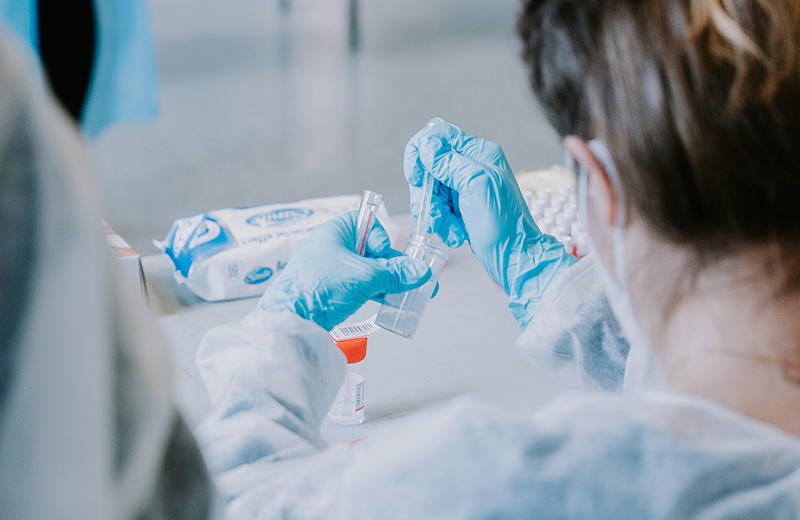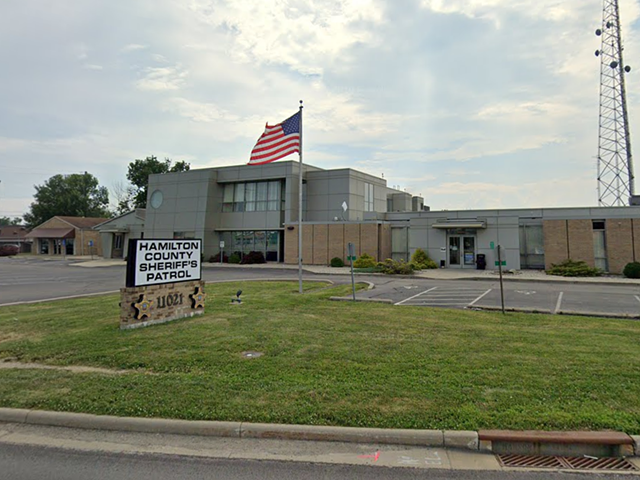Hamilton County has a big goal for the spring and summer — to ensure that 80% of the county’s population is vaccinated for COVID-19 by July 4.
Hamilton County Commissioner Denise Driehaus announced the “Get Out the Vax” effort’s goal during a briefing April 7. Efforts will include vaccination clinics, discounts and education.
Driehaus notes that local businesses, hospital systems and public health systems have stepped up to coordinate or promote vaccination efforts. She adds that local attractions will offer discounts to those who show vaccination verification, such as $10 Cincinnati Reds tickets Monday-Thursday in April and May.
“The idea is to make the vaccine as accessible as possible,” Driehaus says. “We are starting to see an increase in availability because the number of doses continues to increase for Hamilton County, so now is the time to remind everybody to get out, get vaccinated… so we can reopen safely.”
The county seems to be well on its way to reaching that goal. Stephen Feagins, M.D., medical director of Hamilton County Public Health, says that more than one out of three Hamilton County residents have received at least one dose of a COVID-19 vaccine. Nearly 75% of residents over age 65 have been vaccinated.
Pfizer and Moderna vaccines require two doses for full vaccination, while the Johnson & Johnson vaccine requires just one. Recipients are considered fully vaccinated two weeks after their final dose.
But Feagins cautions that COVID-19 still is very present within Hamilton County and residents should continue to wear masks, physically distance from one another, avoid large gatherings and practice good hygiene, particularly as Ohio continues to grapple with troublesome coronavirus variants.
There are more than 100 variants of the coronavirus that have been documented globally, Feagins says, with five especially concerning because of their higher ease of transmission. The variant from the United Kingdom, B117, has about a 50% increase in transmission.
Feagins says that antibodies generated from current COVID-19 vaccines recognize the variants.
“Vaccination is possibly 100 times more effective against variants than natural infection.” Feagins says. “Because of the variants and the fact that we’re not all vaccinated, it is important to maintain compliance with public health mitigation strategies.”
That advice is somewhat at odds with Ohio Gov. Mike DeWine’s new statewide health orders, which rescinds many restrictions on large gatherings, including parades and festivals where crowding naturally occurs. DeWine announced the new orders on April 5.
“We are still wondering how that could work. While that is encouraging that we can relax, the actual doing of that still requires common sense,” Feagins says. “As you walk out and you see groups of folks unmasked in close contact within that three feet, that‘s a close contact, even outside. So we’re still looking at that like everyone else.”
Hamilton County saw about 716 COVID-19 cases per day at its peak in December and is currently down to around 101 cases per day over the last seven days, Feagins says. He cautions that though the outlook has gotten better, the county still is at the high level of infection that it saw last summer when many state mask mandates and restrictions went into effect.
“When something’s really bad and then it’s not as bad, it feels better, even if the level is where it felt really bad a year ago. We still have active cases. We still have hospitalized individuals — thankfully not at levels like we had in January, but we still do,” Feagins says. “Our biggest goal through vaccination is to move from pandemic to endemic, to move from a deadly virus to the types of things like the flu that we deal with every year.
One population the county plans to target for vaccination is college students. Driehaus says that the county is prioritizing one-shot Johnson & Johnson vaccines for students at universities and colleges throughout the area, noting that DeWine is suggesting the same across the state.
“We’ve got quite a few of those in the region, and so we had a conversation about how great it would be if we could have the J&J vaccine available for that, so it’s one shot and you’re done,” Driehaus says. “The end of the school year is coming, and they are likely to be returning home or traveling during the summer.”
Jeff Coleman, vice president for risk management at Xavier University and chair of Xavier’s COVID-19 task force, says that on April 7 alone, the university will vaccinate about 2,000 students. By April 14, every Xavier student will have had the opportunity to get a COVID-19 vaccine, he says.
“It’s really a great step forward in developing herd immunity, not just here, but across the country,” he says.
Xavier also continues hosting public vaccination events, Coleman says, such as the state-sponsored pop-up clinic April 8-10 and the long-term mass vaccination clinic, both at Xavier’s Cintas Center.
Metro is offering free rides on all routes on select dates in April and May to help transport people to vaccination distribution centers.
“We’re making significant progress with vaccine efforts. Vaccine-induced herd protection will give us the best chance at returning to normal activity,” Feagins says. “Hang in there. We almost see the light. We have been doing well, and we want to continue to do well.”
Learn more about Hamilton County’s vaccination efforts at hcph.org and testandprotectcincy.com. Watch the briefing on YouTube.






